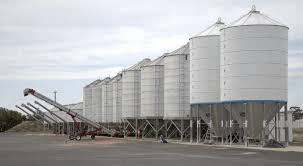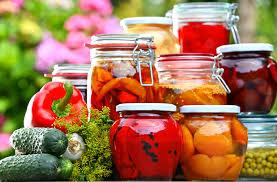The choice of storage structures depends on the available construction materials, quantity of produce to be stored, type of produce, prevailing climatic conditions, purpose of storage, and the farmer’s resources, especially labour and capital availability.
Read Also: Challenges and Potential of Snail Farming
Yam Storage Structures and Their Adaptation to Ecological Zones in Nigeria

Yam storage structures vary across Nigeria’s ecological zones. The design depends on the construction materials available, amount of yam tubers produced, climatic conditions, purpose of storage, socio-cultural practices, and available farmer resources like labour and capital.
In the humid forest zone, yam is commonly stored in a yam barn, the main traditional storage method in major yam-producing areas. These barns are placed under shade and built to allow ventilation while protecting tubers from flooding, direct sunlight, and insect attack.
Though designs differ, all have a vertical wooden framework where tubers are tied individually to ropes and hung on horizontal poles 1-2 meters high, sometimes reaching up to 4 meters. Frame lengths depend on tuber quantity and may exceed 2 meters.
Ropes are typically fibrous; in southeastern Nigeria, raffia from palm wine trees is used. Permanent barns require annual maintenance and often have vertical posts made from living trees trimmed periodically.
Palm fronds and other materials provide shade, with the tree’s vegetative growth further protecting tubers from heat and rain.
In the Guinea Savannah zone, yam barns are constructed from guinea corn stalks, sticks, grass, and yam vines. Yams are heaped inside the barn, which is built annually near the house under a tree to prevent heat damage.
At storage end, the barn is burnt, and a new one is constructed before the next harvest. Unlike the humid forest where yams are stored separately to avoid rotting, drier areas like Niger State allow stacking of tubers in piles.
During the rainy season, yams transfer to mud huts or guinea corn storage rhombus to protect them from rain. Another savannah storage structure is the yam house or crib, with thatched roofs, wooden floors, bamboo walls, raised off the ground with rat guards.
Tubers are carefully stacked inside these cribs. Underground storage in trench or clamp silos involves excavating pits lined with straw where tubers are stored either horizontally or vertically and covered with straw or earth layers.
Read Also: The Complete Guide to Snail Farming Techniques
Grain Storage Structures: Types, Benefits, and Challenges

Various grain storage structures exist depending on operation scale, either open to air exchange or airtight (hermetic). Stores provide shelter and, in hermetic types, prevent pest damage. Grains may be stored in sacks on both small and large scales.
For medium or long-term storage, hermetic sacks may be chosen when the benefits justify the cost. Traditional mud stores and modern plastic or metal silos can significantly reduce Post Harvest Losses for smallholders. These stores may be hermetic or sealed enough to keep pests out.
Effective grain storage methods improve grain quality and quantity at outturn. Post Harvest Losses can be reduced by modifying existing store types or introducing better traditional stores like mud silos to communities that do not use them.
Mud silos offer better protection than open stores because they are well sealed. Research by the Opportunity Industrialization Centre, Tamale, shows that grain losses remain low in these silos regardless of pest treatment.
Modified farm stores address long-standing storage problems in Africa and elsewhere.
Though grain storage structures protect against insects, rodents, molds, theft, and fire, traditional designs may be ineffective and difficult to build where hardwood supply is limited due to deforestation.
Metal silos present ongoing opportunities to reduce Post Harvest Losses in Sub-Saharan Africa. Key challenges include ensuring grain dryness before storage and performing phosphine fumigation to control pests.
Plastic bags and other storage containers made of plastic can be hermetic, slowing biodeterioration. The triple-bagging technique, promoted for cowpea storage and adaptable to grains, uses two inner polyethylene bags and a durable outer bag.
Well-dried cowpea is sealed in the first bag, which is then placed inside the second and sealed, followed by the third bag to protect from damage. Clear plastic bags allow easy inspection for insect attack.
Bags should remain sealed for at least two months after filling, and be resealed quickly after opening to prevent pest entry. Bags must be protected from rodents that may create holes and break the seal.
Plastic drums, including water tanks, can be sealed and used effectively as hermetic grain stores.
Do you have any questions, suggestions, or contributions? If so, please feel free to use the comment box below to share your thoughts. We also encourage you to kindly share this information with others who might benefit from it. Since we can’t reach everyone at once, we truly appreciate your help in spreading the word. Thank you so much for your support and for sharing!

